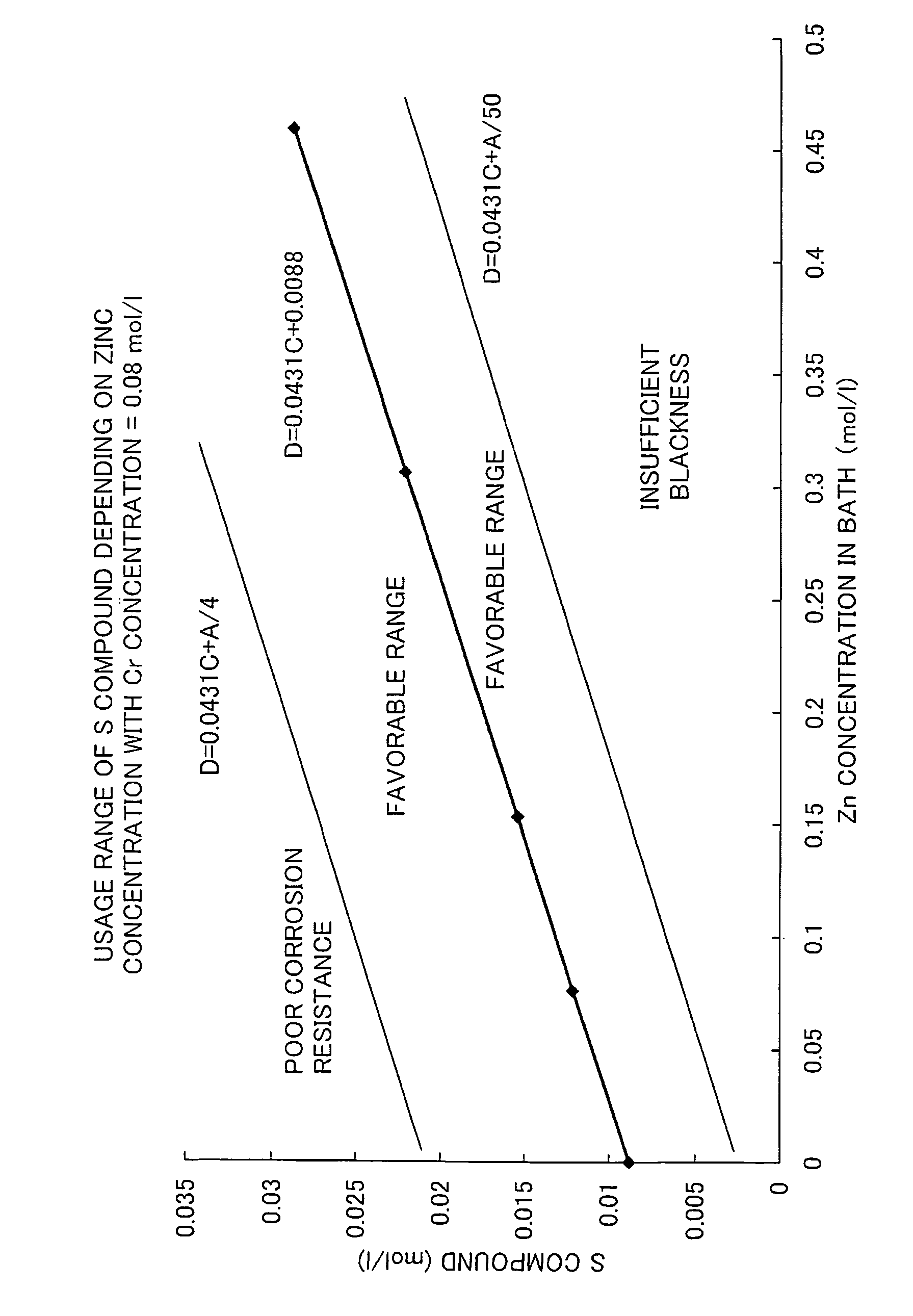Aqueous treating solution for forming black trivalent-chromium chemical conversion coating on zinc or zinc alloy and method of forming black trivalent-chromium chemical conversion coating
a technology of black trivalent chromium and chemical conversion coating, which is applied in the direction of welding/cutting media/materials, manufacturing tools, welding apparatus, etc., can solve the problems of hexavalent chromium harming human bodies and the environment, bath has environmental problems, and the plating alone will not provide sufficient corrosion resistance, etc., to achieve uniform and stable black and bright excellent black appearance and corrosion resistance, and low blackness reduction
- Summary
- Abstract
- Description
- Claims
- Application Information
AI Technical Summary
Benefits of technology
Problems solved by technology
Method used
Image
Examples
examples 6 to 9
[0048]After the trivalent chromium chemical conversion treatments of Examples 1 to 3, finishing or overcoating is performed. Table 2 shows the treatment conditions thereof.
[0049]
TABLE 2Example 6Example 7Example 8Example 9Trivalent chromiumExample 1Example 2Example 3Example 3chemical conversiontreatmentKind of finishing orchromic phosphate-chromic phosphate-chromicmethacrylateovercoating liquidbased finishingbased finishingphosphate-based,resin-basedliquidliquidfinishing liquid +organic coatingmethacrylateresin-basedfinishing liquidTreatment20 ml / l20 ml / lZTB-118: 15 ml / lundilutedconcentrationDIPCOAT W: 100 ml / lsolution is usedTreatment condition50° C. - 10 sec50° C. - 10 sec25° C. - 10 sec25° C. - 60 secBrand name ofZTB-118 availableZTB-118 availablemixture of ZTB-DIPCOAT Wchemicalfrom Dipsolfrom Dipsol118 + DIPCOAT Wavailable fromChemicals Co., Ltd.Chemicals Co., Ltd.both availableDipsol Chemicalsfrom DipsolCo., LtdChemicals Co., Ltd.
PUM
| Property | Measurement | Unit |
|---|---|---|
| temperature | aaaaa | aaaaa |
| thickness | aaaaa | aaaaa |
| thickness | aaaaa | aaaaa |
Abstract
Description
Claims
Application Information
 Login to View More
Login to View More - R&D
- Intellectual Property
- Life Sciences
- Materials
- Tech Scout
- Unparalleled Data Quality
- Higher Quality Content
- 60% Fewer Hallucinations
Browse by: Latest US Patents, China's latest patents, Technical Efficacy Thesaurus, Application Domain, Technology Topic, Popular Technical Reports.
© 2025 PatSnap. All rights reserved.Legal|Privacy policy|Modern Slavery Act Transparency Statement|Sitemap|About US| Contact US: help@patsnap.com

